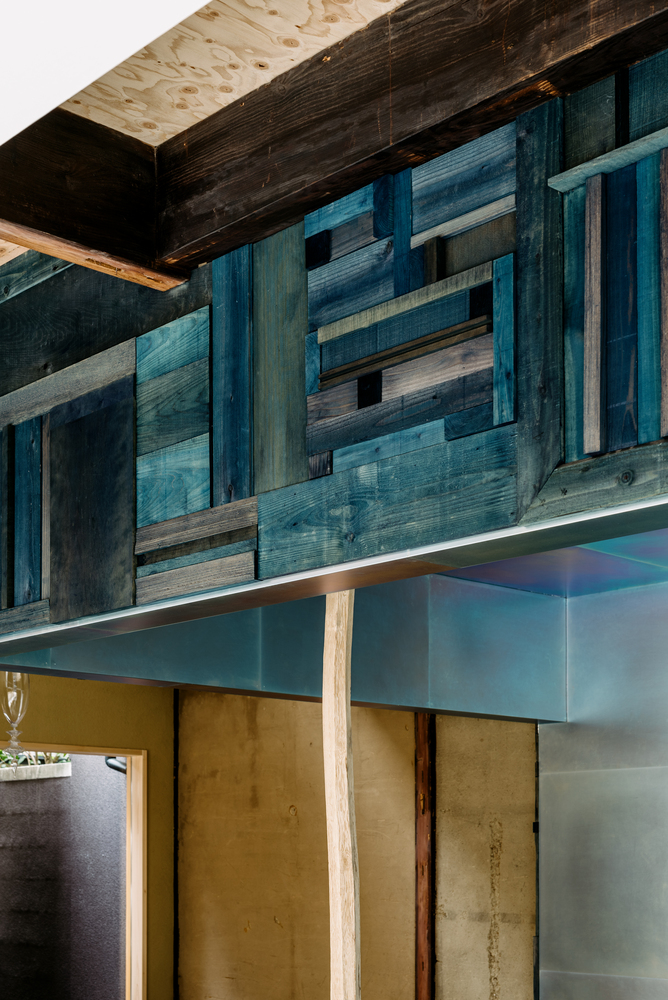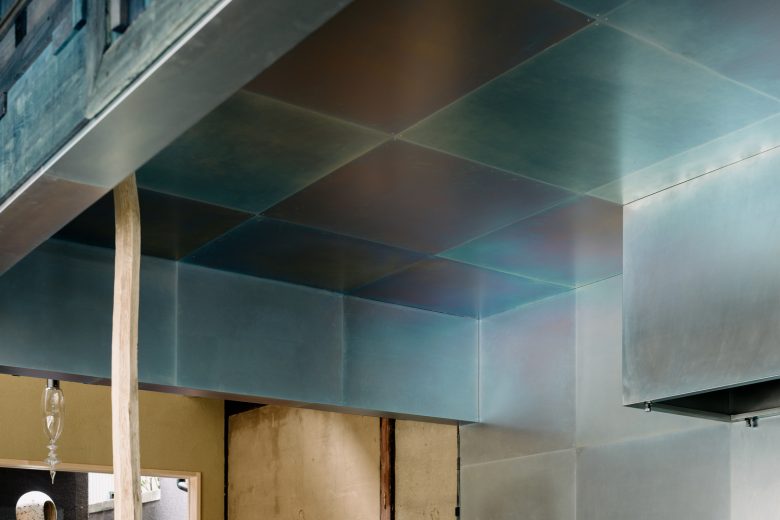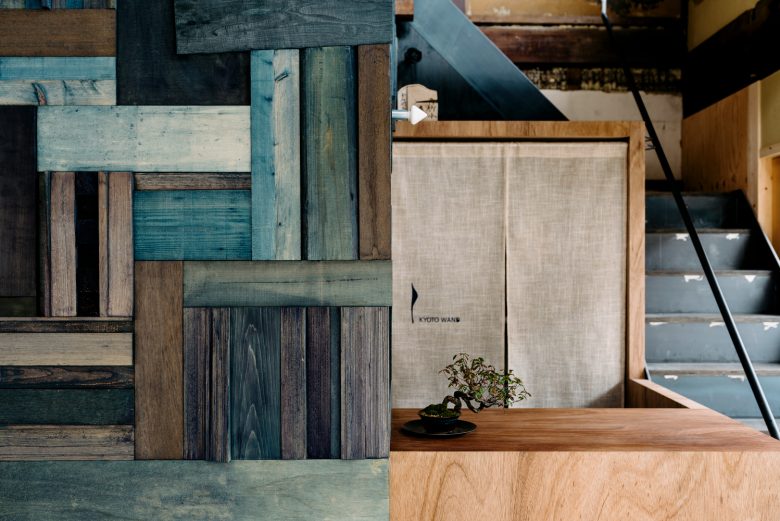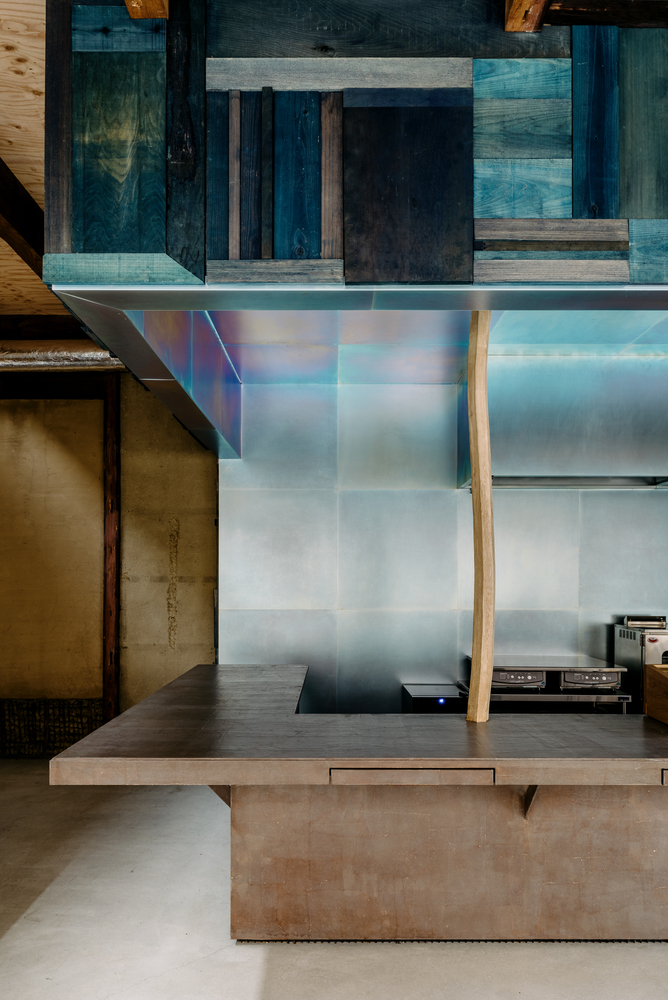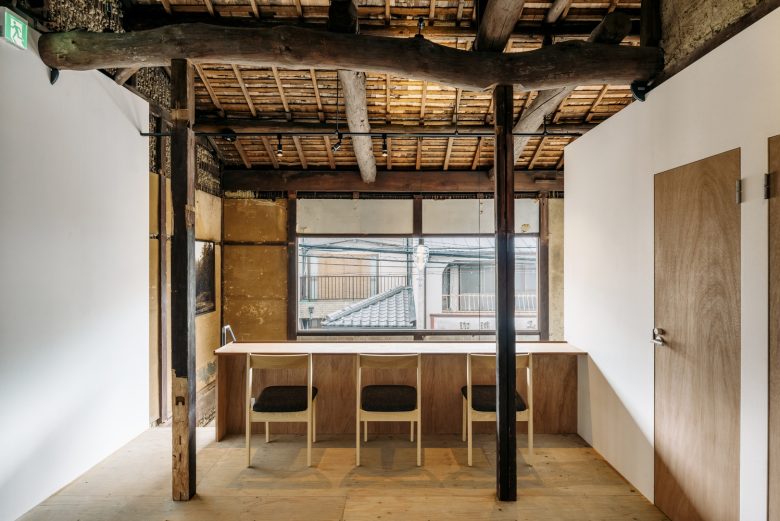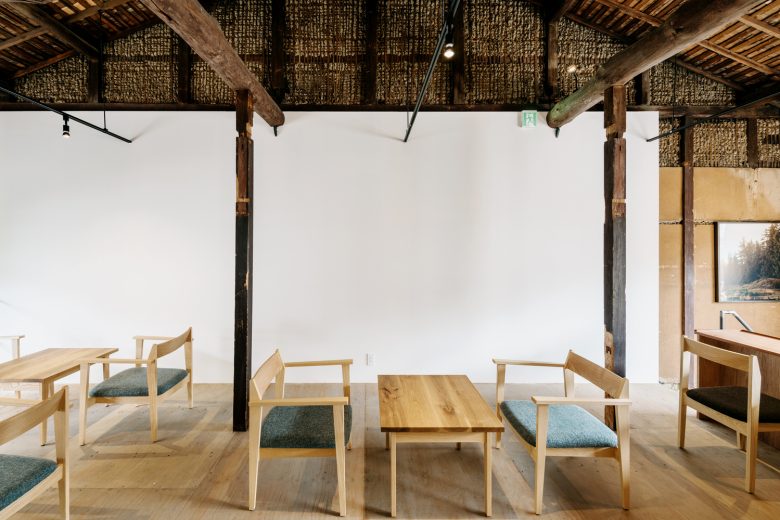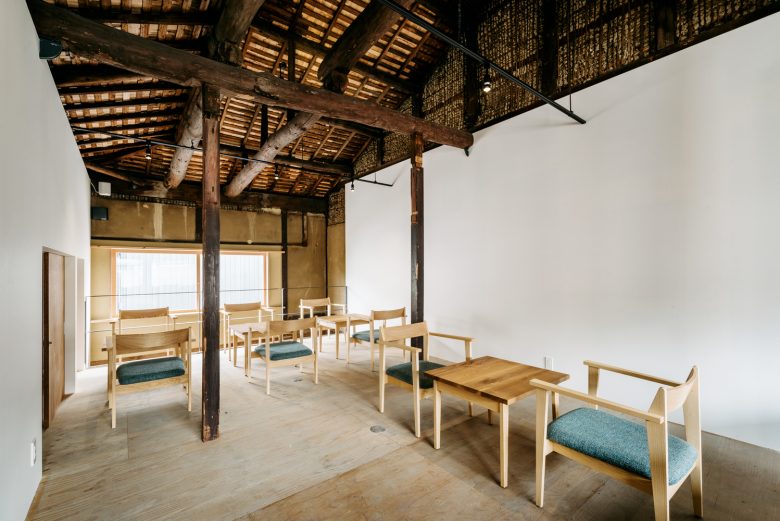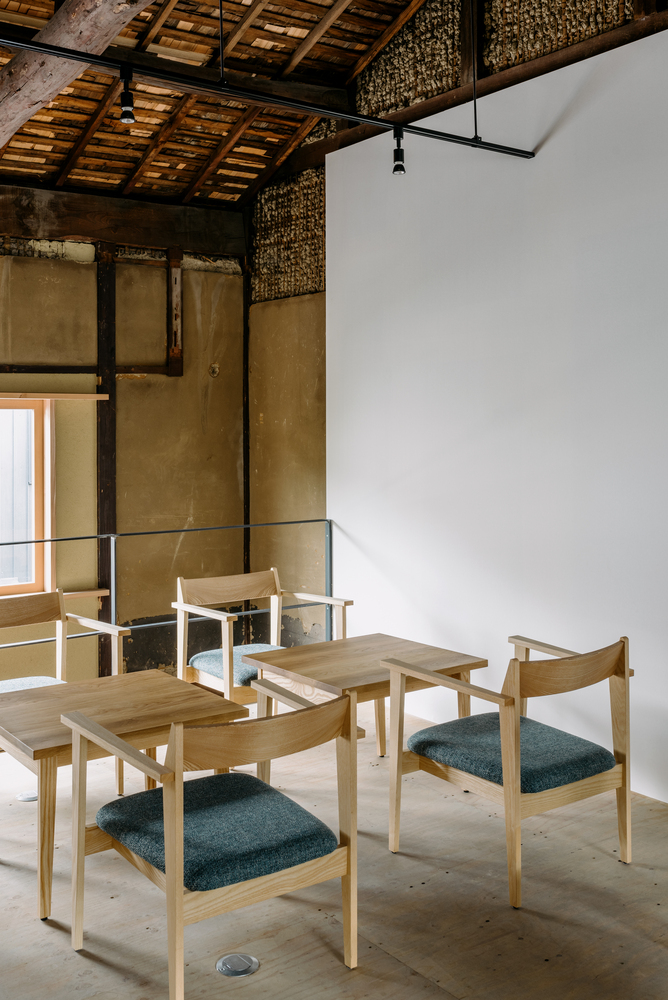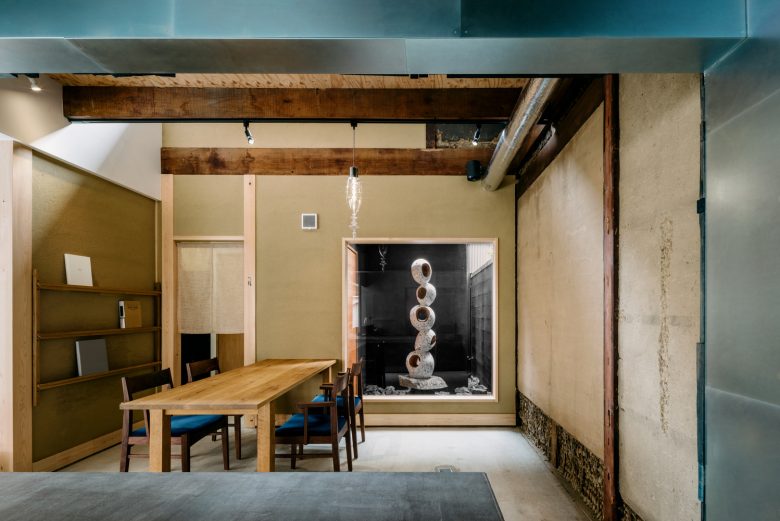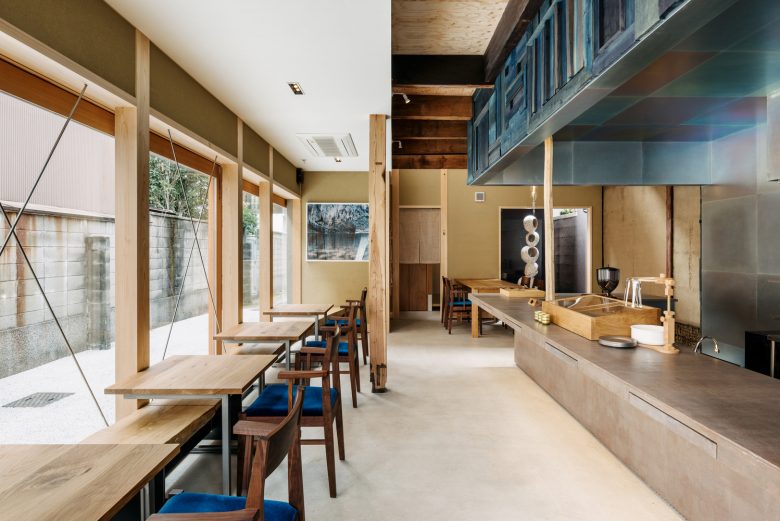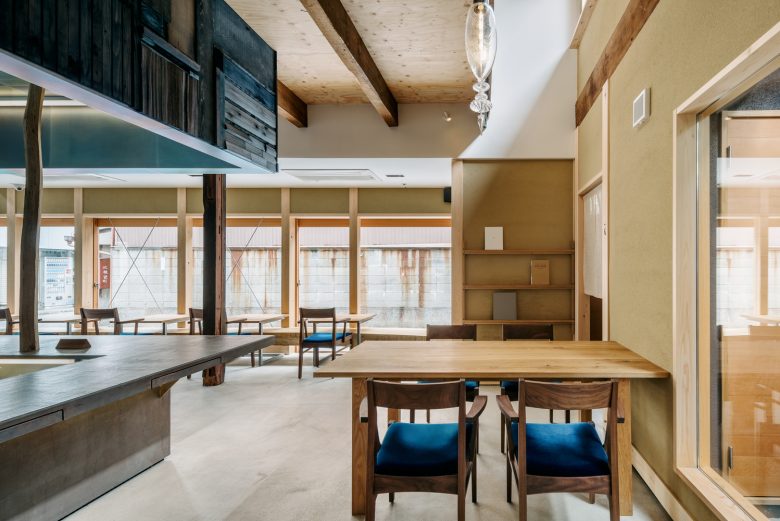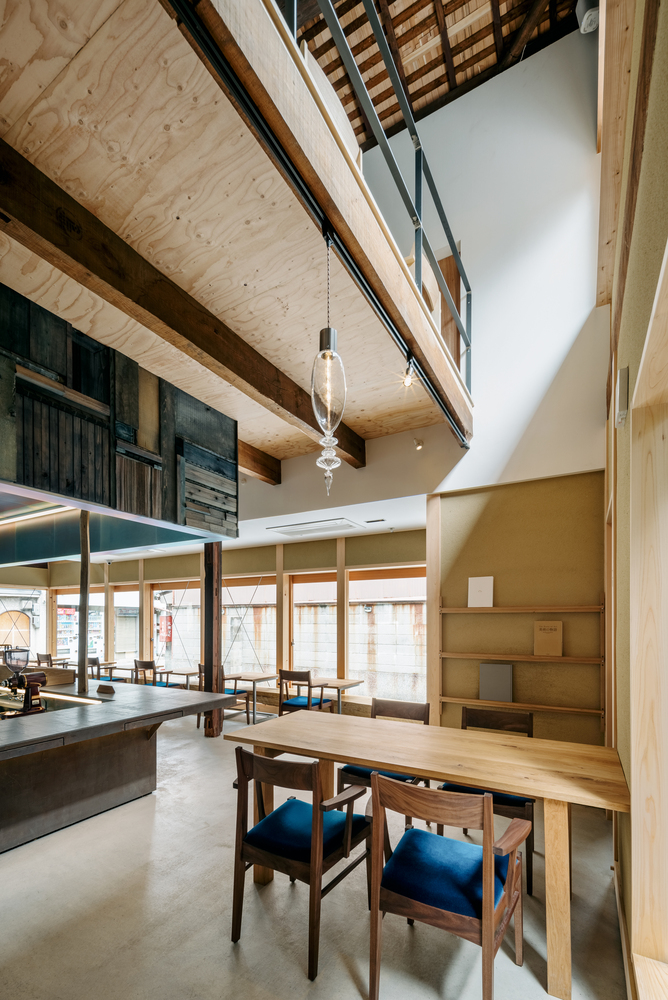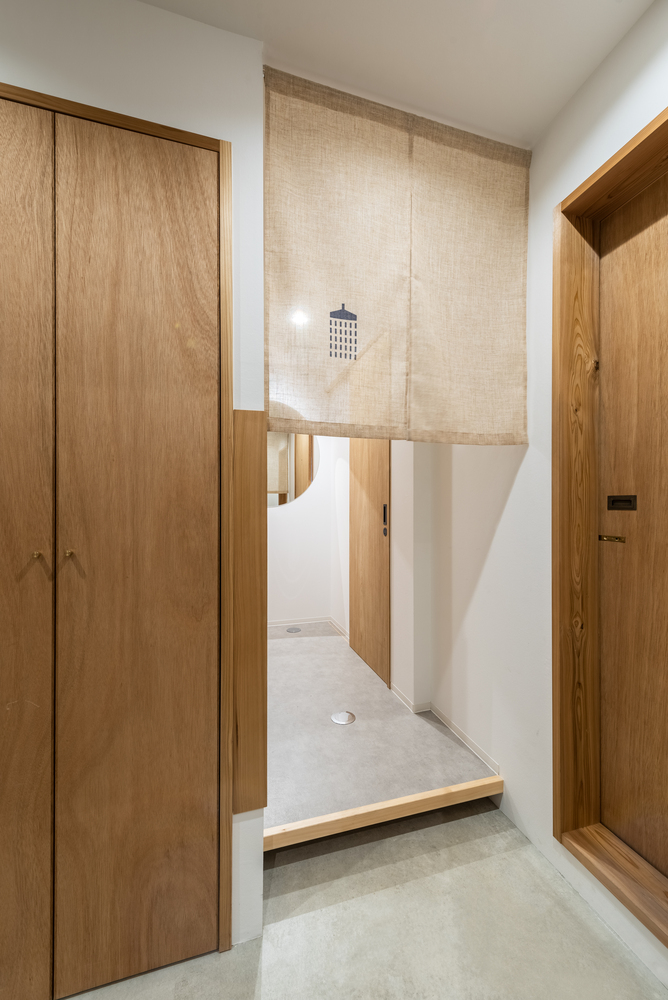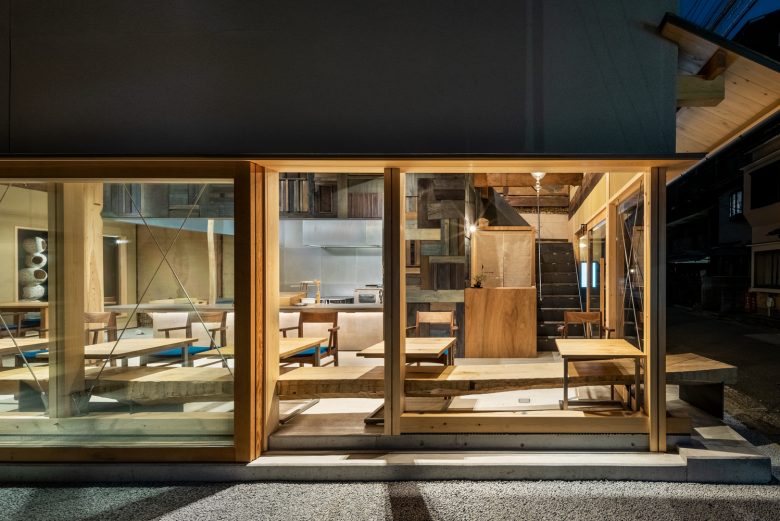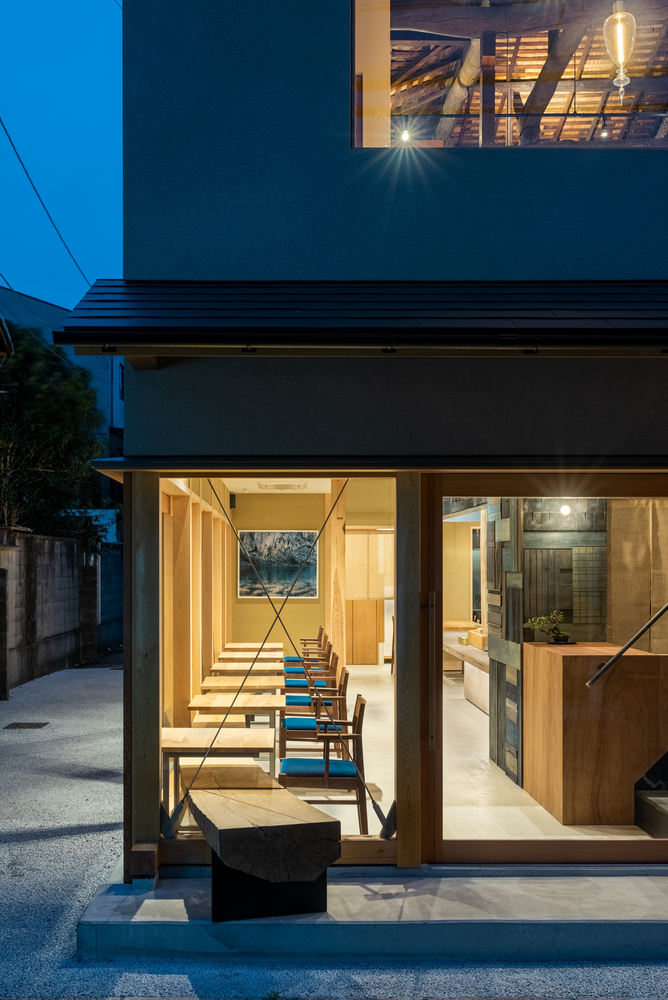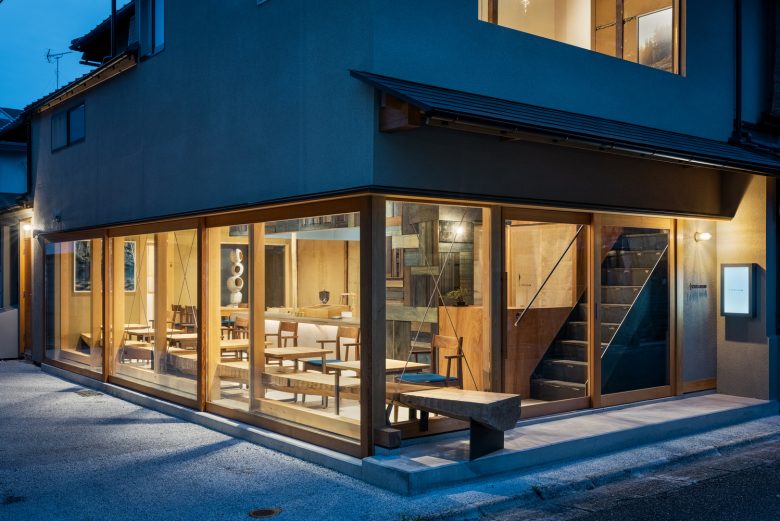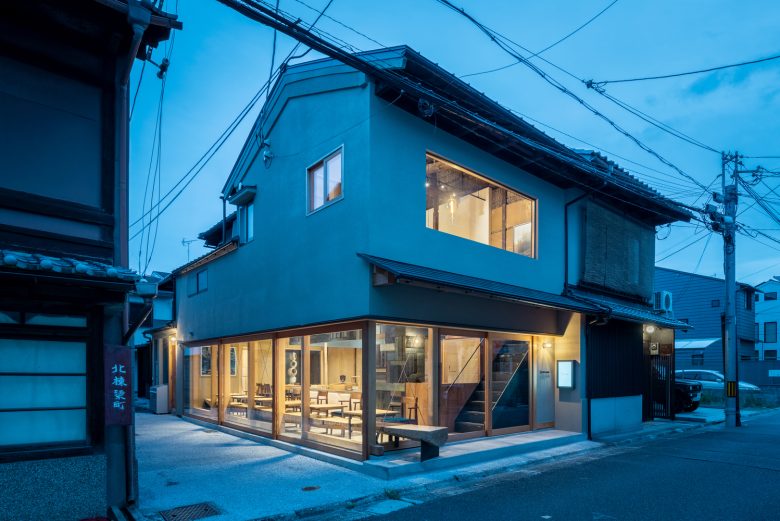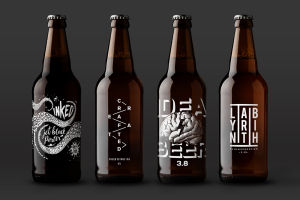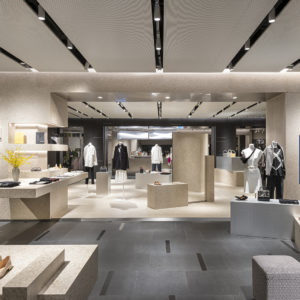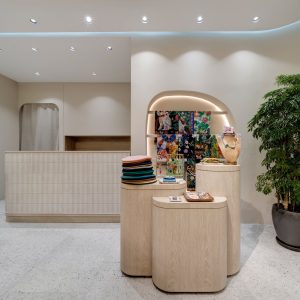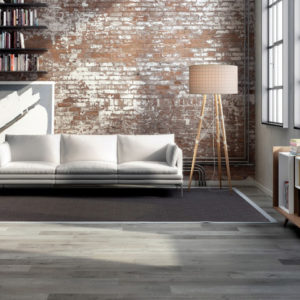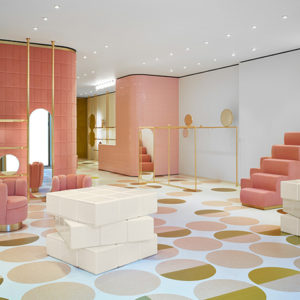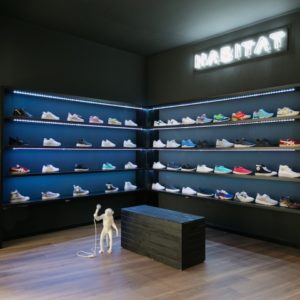
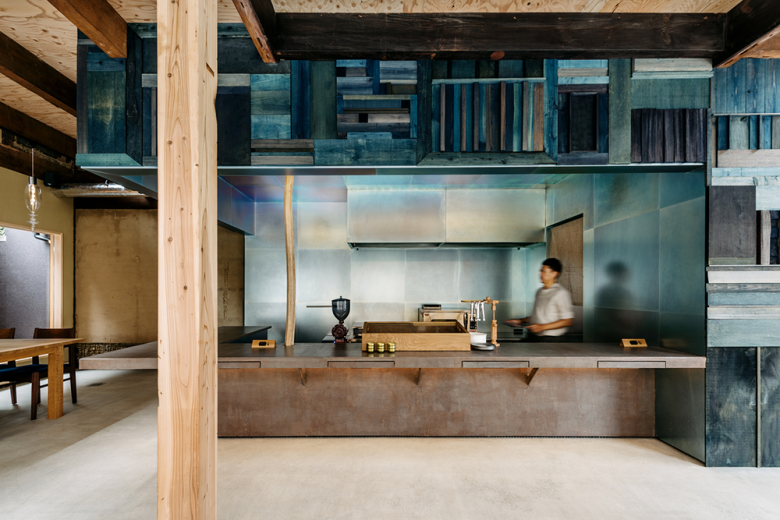
A bay-shaped landform formed on the banks of a river, separate from the mainstream. It is called a ” WAND (湾処) “. The gentle flow of the river, while maintaining its connection, nurtures a variety of vegetation and forms a rich biotope. For everyone who gathers here, “ 京都湾処 (KYOTOWAND) ” will be a little bit gentle and free between “to here” and “from here”. KYOTOWAND is filled with such wishes. A bay-shaped land formed on the banks of a river that is separate from the mainstream is called WAND (湾処). The gentle flow of the river, while maintaining its connection with the mainstream, nurtures a variety of vegetation and creates a rich and diverse biotope. KYOTOWAND (京都湾処) is desired to be like this gentle and free place for everyone who gathers here whether they are coming or going. This wish is expressed in the name of the place itself; KYOTOWAND.
This project is a renovation of a Japanese traditional townhouse (machiya) and is to provide a base for day tourists to stay as it is located just a 5-minute walk east of Kiyomizu Gojo Station. In Kyoto City, temples, shrines, and cultural facilities are world-famous tourist attractions. In addition, because of the geographical characteristics of Kyoto, which is a large basin surrounded by mountains, it is a popular destination for tourists and an ideal environment for sports activities such as trail running along mountain paths and rivers. Specifically, the city offers a number of trails, such as the “Around Kyoto Trail,” which is over 80 kilometers long. However, there is a goal to increase the number of tourists and recognition of these sports activities.
With this in mind, developing facilities where people can wash up and change their clothes (shower rooms), store their belongings (lockers), grab a bite to eat, and quench their thirst (kitchens), is a good way to promote sporting activity for tourists that is already culturally enjoyable. Thus, we plan to create a place that comfortably combines the cultural enjoyment that is already well recognized with the sporting enjoyment that is likely to expand in the future. For example, a couple can run along a mountain trail in the morning and go sightseeing in the city in the afternoon. In addition, a couple might enjoy a trail run and a visit to a temple or shrine separately, and then meet up afterward. We aim to enhance the potential of Kyoto City so people can enjoy different activities and directions within a very short distance.
In regards to the details of the construction, the original structure was difficult to recognize due to the building having been renovated several times in the past. For this project, with the help, knowledge, skills, and sense of the carpenter Mr. Okimoto, the building was dismantled down to the existing structure. We worked on repairing, reinforcing, and updating the building so as to be loved by the local community as part of the original elegant Kyoto machiya townscape. The project was planned with careful attention and consideration for the balance between repair and reinforcement, and renewal.
The site is a corner lot with the north side facing a relatively wide road, while a private cul-de-sac road runs through it on the east side. The front road leads east to one of the entrances of the Kyoto Round Trail. On the exterior, the tiled façade has been removed, which had been covered up during several renovations. The eaves and finish of the facade have been restored while changing details and also restoring the connection with the neighboring houses. The first floor is directly connected to the exterior, including the driveway, through large glass windows and glass sliding doors. Along the driveway, carpenter Masaaki Okimoto constructed a bench made of half-sawn chestnut logs to create a strong natural material feel.
In certain seasons, the sliding door can be opened to face the driveway. We envision this to be a gathering place, much like a bay area, taking in the flow of the city. Once inside the building, on the first floor you will find a reception area, a kitchen, a pickup counter, refreshments, and return tray area, a bench with side tables and chairs for seating, and a table for four in front of a tsuboniwa (small garden). A restroom, lockers, and shower room are located at the back of the building. The design composition and materiality of the building are elicited from the existing beams, pillars, and earthen walls, thus taking advantage of their age-old expressions. The new features are thoughtfully embedded in the above existing structure.
The indigo-dyed wood panels in the kitchen space are symbolically placed in the center. We sought out the expertise of artist Yuko Yamamoto, who specializes in dyeing plants and trees. Upon visiting the studio in Nose, we asked her to help us with the indigo dyeing of these wooden panels. The unusual requirement of accepting a non-uniform dyeing condition was tackled in collaboration with the members of Kizaburo, who oversaw the wood paneling, resulting in a wall surface rich with expression and a presence that will serve as the face of the kitchen space. Mr. Wataru Hatano was asked to apply the washi paper to the counter. After providing him with a rough idea of what we wanted, we left it up to his creative vision to finish the work.
During the construction process, the changing texture of the washi countertop displayed an amazing work of art. Trivalent chromate steel sheet is used as a finish for the ceiling and walls inside the kitchen, which is a film treatment normally used for invisible parts of industrial products. The color of the material fluctuated depending on the angle of view. The combination of the craftsman’s handiwork and the industrial parts, perhaps due to their eccentric individual expressions of each other, has resulted in a finish that enhances each other’s attractiveness perfectly. The shower room in the flat-roofed section at the rear of the first floor is equipped with two private showers and one double shower. In addition to the luggage storage in the lockers at the front of the facility, the facility offers a unique and original use from that of a typical café. The second floor is a space between the existing beams and the attic, as well as the white walls we installed. This floor is usually used as a seating area. Counter seats facing the stairwell and slightly lower table seats allow for guests to relax and enjoy themselves. These tables and chairs can be disassembled and stacked for easy storage in the storage room. The space is intended to be used several times a year for gallery exhibitions, thus accumulating traces of the artist’s work.
In addition, glass artist Ryo Sekino’s pendant lighting shades installed in the stairwell, Takayuki Daikoku’s pendant lighting shades in the tsuboniwa garden, sculptures by Takayuki Daikoku in the tsuboniwa garden, and photographs by Yasumi Kakimoto hanging on the walls all add to artistic overtone. The client’s desire was to create a space where people could enjoy and be exposed to art who may not have had that experience before. The furniture, including the tables and chairs on the first and second floors, was designed by Naomi Toda of Potitek. The bookshelves and countertop fixtures were created by Yuto Sasaki of Lenogu. They were delivered after intentional discussions, including making mock-ups during production. The facility is different from a typical café in that it operates on a time-based fee structure that includes the use of showers and other facilities. In addition, it utilizes electronic devices (such as iPhones) for ordering. The coffee beans are roasted with a shallow roast by Yutomo Kitabe of Tabinone in Kyoto and a deep roast by Tsutomu Mukai of Misago Coffee in Takarazuka, and the Japanese black tea is by Hiroko Yokoe of Jane T. The selections are inclusive and carefully selected.
Architects: Coil Kazuteru Matumura Architects
Photographs: Yoshiro Masuda

